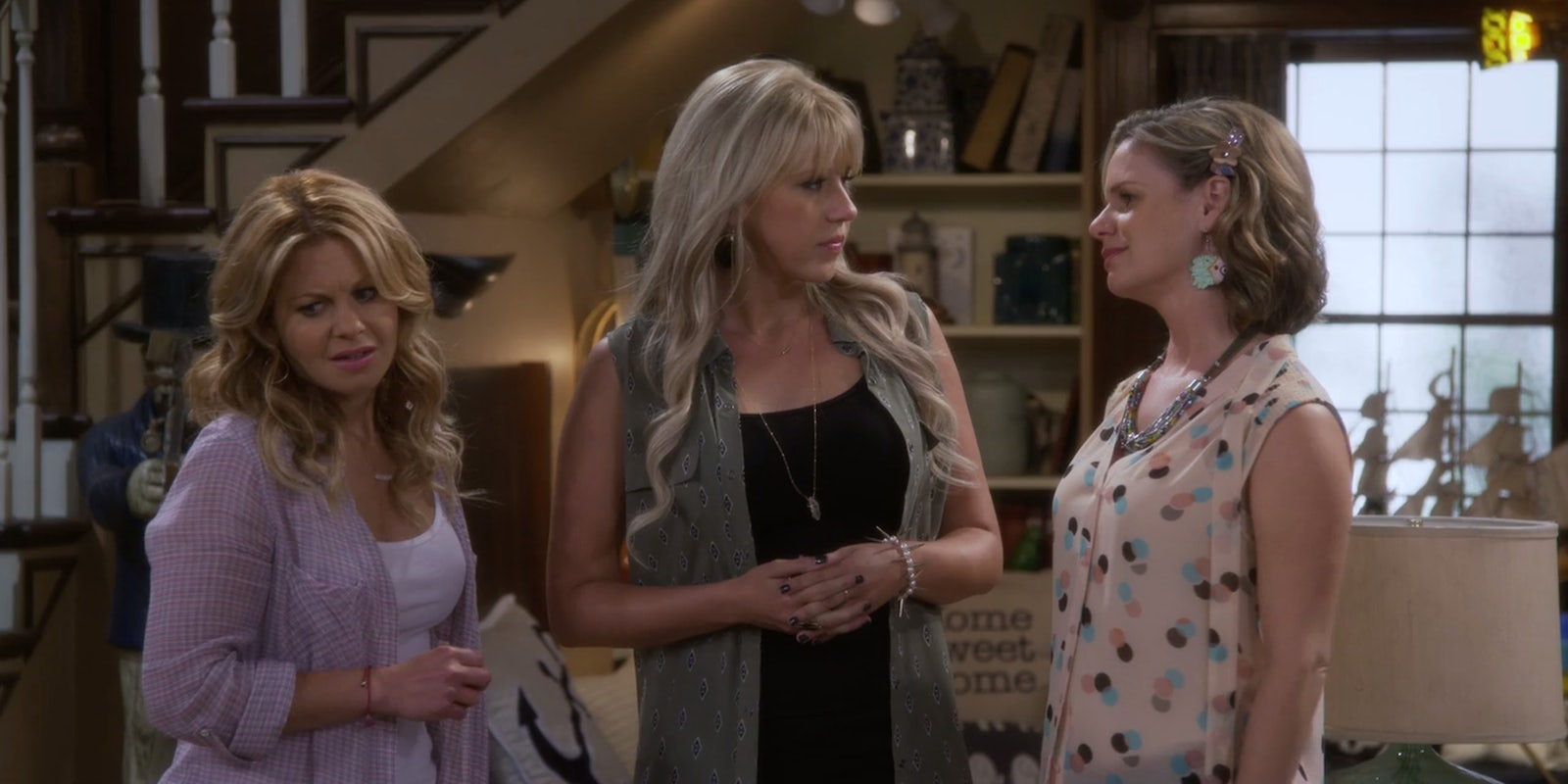Everywhere we look, we’re getting a reboot or revival directed our way. But are they worth it?
In the past few years, we’ve seen Arrested Development, Community, The Mindy Project, The X-Files, Heroes, and Boy Meets World rescued or revived on our screens in new forms—whether it’s from Netflix, Hulu, a new network, or an old one—and we’ve already got new seasons of Twin Peaks, Gilmore Girls, Xena: Warrior Princess, and that long-promised Deadwood movie to look forward to. Fuller House, the Netflix revival of the original ABC family sitcom Full House, is the latest to join the nostalgia reboot, and based on the first episode, we’re not sure that was such a good idea.
Between all of the gags, Easter eggs, and callbacks to the original show, which are so numerous that one could probably make a drinking game out of them, “Our Very First Show, Again” does set up the general premise. D.J. Tanner (Candace Cameron Bure), now a mother of three boys, has moved back into her childhood home after the death of her husband with some help from sister Stephanie (Jodie Sweetin) and Kimmy Gibbler (Andrea Barber), a divorced mom of a teenage daughter whose ex-husband is still trying to chase her.
The original caretakers of the show (Bob Saget, John Stamos, Lori Loughlin, and Dave Coulier) are about to move out of the house, and as much as Fuller House is about nostalgia, it will ultimately be more about the younger generation of children who all find themselves in their guardians’ shoes.
The show begins with a clip of the original Full House opening sequence before abruptly cutting to “29 years later.” The house hasn’t really changed—and neither have any of the people, even if they’ve all gotten older. The characters are almost stuck in the ’90s even with the inclusion of cellphones and a mention of San Francisco’s housing market.
A couple of scenes feel more like a trade-off of every catchphrase uttered throughout Full House’s eight-year run (almost to get them all out of the way) than anything resembling a plot, one that eventually breaks the fourth wall to acknowledge the absence of Michelle (played by Mary-Kate and Ashley Olsen). It’s almost mean-spirited.
#FullerHouse characters shading The Olsen twins for not being in #FullerHouse is the year’s weirdest TV moment pic.twitter.com/hNagCFhGPU
— Jarett Wieselman (@JarettSays) February 26, 2016
The episode ultimately gets D.J., who tries to juggle everything on her own—three kids (one who is sick), her job at a vet clinic, chores, and an emergency dog birth from one of Comet’s descendants—to be OK with asking for help from others. And with D.J., Stephanie, Kimmy, four kids between them, and a new puppy living in the house, it’s going to be a tight fit.
While the focus is on the children, we do learn a bit about the grownups and what’s become of their lives, but even then it can be rather one-note. Danny’s new wife (to us) Teri is hardly given an introduction, Becky—a successful talk show host—is reduced to offering to take D.J.’s youngest son off her hands because sons Nicky and Alex ended up disappointments leaning on the “lazy, entitled millennial” stereotype, and Stephanie is asked if she wants to have kids and settle down by D.J., a comment many women hear far too often.
Throughout it all, the show does hit a few of those moments that made audiences aww. In a direct callback to the Full House pilot, the family gathers together to calm down a crying Tommy by singing the Flintstones theme song, with the original clip playing right beside it to offer a nice touch.
Hello yes the first episode of #FullerHouse made me cry https://t.co/VVU0k1j8un pic.twitter.com/libJaqlilR
— Jenna Guillaume (@JennaGuillaume) February 26, 2016
It might not always hit, but when it does it brings the memories back.
All 13 episodes of Fuller House are available to stream now on Netflix.
Screengrab via Netflix


